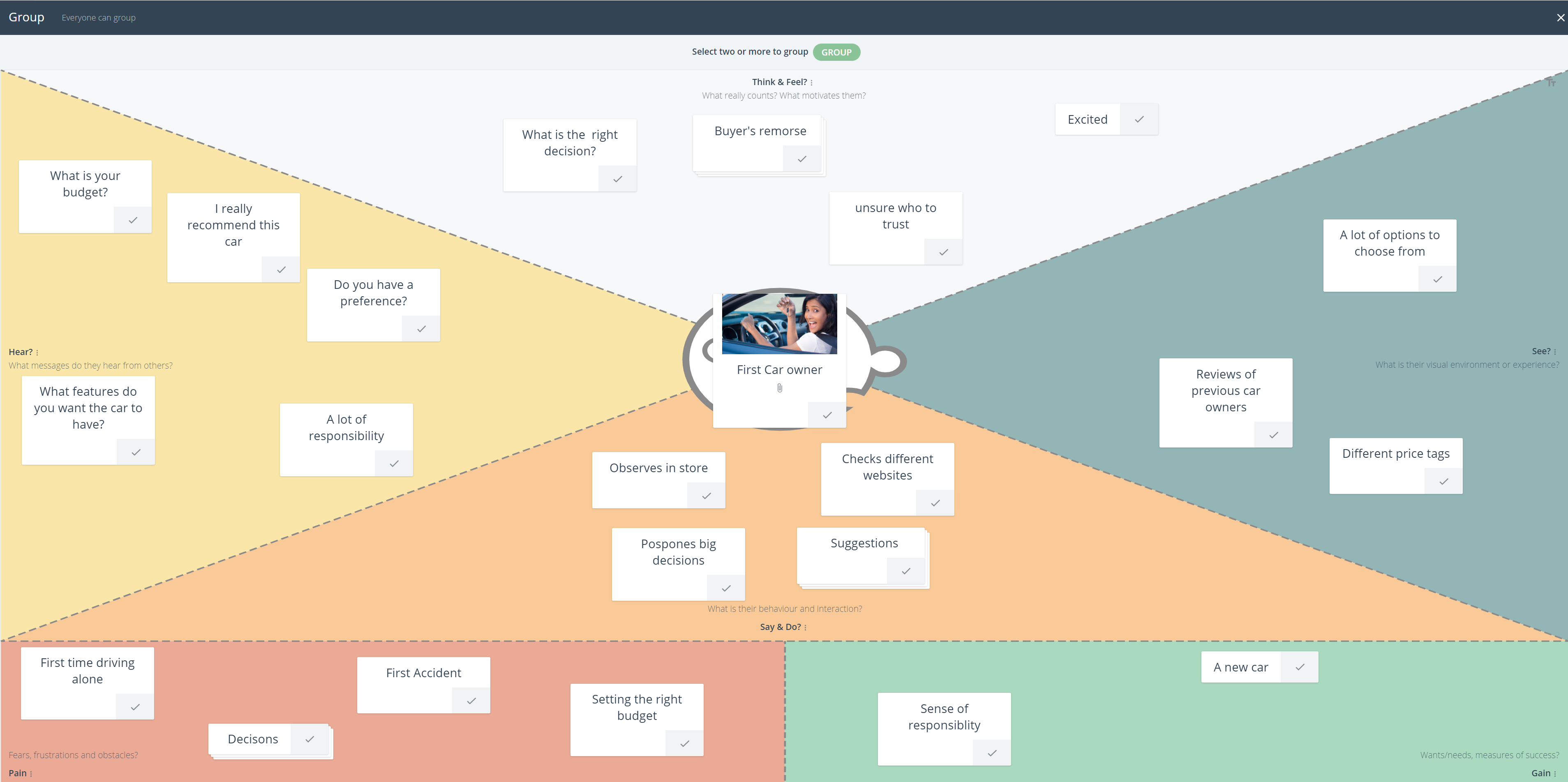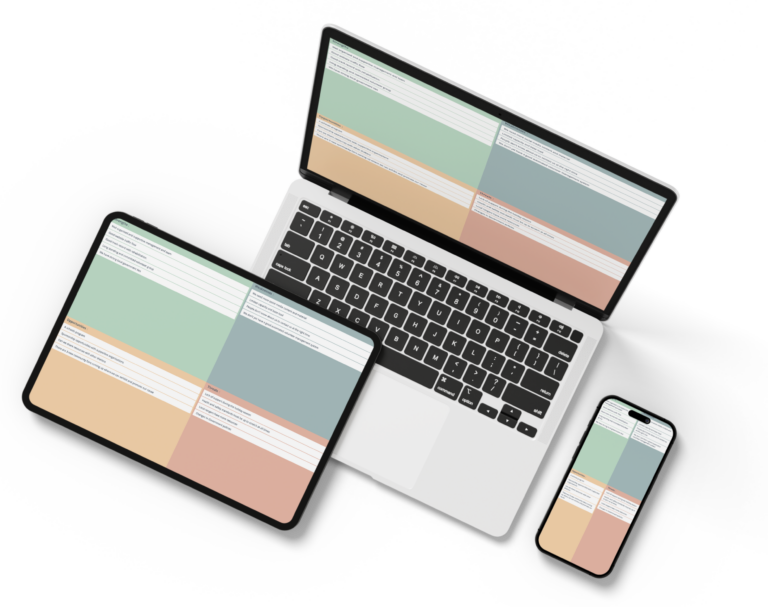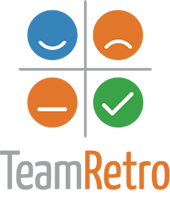
What is an Empathy Map?
This design thinking tool helps the team explore the persona, pains and gains of a particular customer in order to improve service or product value to them. By capturing perspectives and building empathy, this helps with key judgement calls as to how a product benefits the customer.
By giving the the team an easy and digestible way to give the team a window into the mind of the customer and to build empathy with their experience, desires and needs. This way, the solution is designed with the customer in mind.
What are the Benefits of Using an Empathy Map?
Overall empathy mapping gives your team a greater understanding through a collaborative process to build a “picture of the user” through gathering data, ideas and information that can lead to better product design and interaction. It can summarize qualitative and quantitative research and acts as a single source of truth when developing strategies that are designed to bring value to them.
- Puts the team in the shoes and mindset of the customer.
- Helps team understand the user experience (UX) in order to see how they interact with you.
- Helps build a narrative based on what the customers experiences and feels.
- A simple visual framework that highlights customer needs.
- A great communication piece for everyone for validation and sharing ideas.
Who Should Use Empathy Map?
- UX professionals and teams
- Marketing teams
- Product design teams
- Development teams
- Bang for the buck
- Buyer Persona
- Feature Planning
- Features Audit
- Lean Coffee
- Impact Effort Matrix
- Value proposition canvas
- Business Model Canvas
Tips for Using an Empathy Map
- Always have 1 empathy map per customer.
- You can always rotate groups between each customer, allowing them to add, or thumbs up ideas that are already there.
- Use comments to capture questions about a statement.
- Using an opening statement that you have heard about from a customer can help with kick-starting the brainstorming process.
- Use a blend of actual data and perception statements to get a holistic view.
- Story telling to explain the environment and context of the end user can help set the mood and improve data collection.
How to Use Empathy Map Canvas
When creating an empathy map, you should do one per person or customer type. If you are selling fresh produce, then the chef in in a fine dining restaurant with multiple service lines would be different to a produce manager of a chain. The empathy map should be labelled with a very clear definition of who the customer is. Sometimes even name and designations can help.
Kick- start the process with a statement that you hear from the customer and add this to your empathy map. This statement may have been from a user interview, email, social media or even direct feedback.
Then as a team work through the facilitated process, highlighting and indicating which responses resonate the most to help build an overall visualisation of the customer.
How to Use the Empathy Map to Run Better Meetings

Brainstorm
Start brainstorming through each of the different hats.

Group
Review the responses for common themes that can be grouped.

Vote
Have people voted on the topics that they would like to discuss the most.

Share
Share the results and facilitate the discussion towards a decision.
During the brainstorming process, the goal is to add or consolidate data around the focussed customer in the empathy map. Having a statement that they customer has heard, a fact or some data around the customer can help to initiate the process.
Facilitate the ideation process by either having general conversations that are captured in real time by everyone, or providing some thinking time to allow everyone to add their own thoughts onto the empathy map canvas, before it is shared back to the group.
Each element of the canvas should be populated. A good way to test the quality of the canvas is to switch maps with another group, allowing them to add, question or comment on the ideas from their peer created maps.
In this phase, the goal is to discuss what has been put down. Looking for ideas that are essentially the same and group them as one.
Use the thumbs up and thumbs down with the the team to indicate which statements people most like or dislike. This will automatically tally in GroupMap to allow you to see which aspects are resonating the most with the team, and might best represent the customer.
Talk through the results to clarify and get any new insights and perspectives. This is a good time to ask participants to think about how this information could feed into their product service delivery and design. The results can then be downloaded, printed or shared as a reference point for further activities.

Save Effort, Time and Money with GroupMap
GroupMap offers more than just an online digital whiteboard—it’s innovative platform is designed to enhance the quality of your team’s decisions. With features that prevent bias and make facilitation seamless, GroupMap ensures no single voice dominates and ensures productive, inclusive conversations.
Its intuitive interface is easy for anyone to use, and its scalable design supports small teams and large groups whether they are face to face or around the globe. Customisable templates and workflows keep discussions focused on objectives, helping you drive actionable outcomes each and every time.
Create your first map and invite people in to start sharing their thoughts NOW.
Experience the power of GroupMap with our FREE 14 day trial.
Your free trial gives you access to all of our features, no credit card required.
